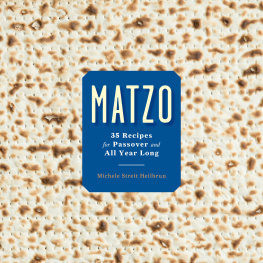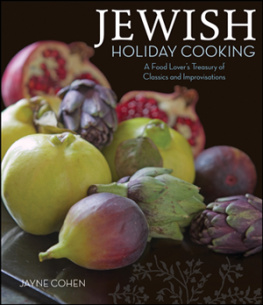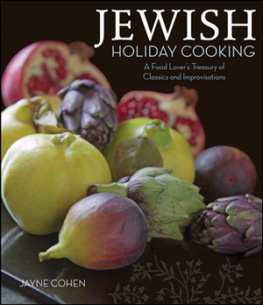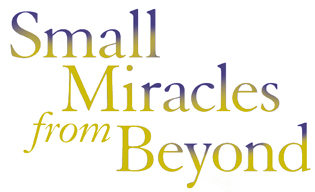STERLING ETHOS and the distinctive Sterling logo are registered trademarks of Sterling Publishing Co., Inc.
All rights reserved. No part of this publication may be reproduced, stored in a retrieval system, or transmitted in any form or by any means (including electronic, mechanical, photocopying, recording, or otherwise) without prior written permission from the publisher.
For my husband, Motty, whose goodness and kindness is beyond this world.
To my father, Hershel Frankel, and my uncle and aunt, Isser and Malku Handler. From the ashes of the Holocaust, you built lives that were purposeful and inspirational.
That is Beyond.
PREFACE
D eep in the hearts of most people a great fear of randomness resides. We wrestle with the disquieting sense that the events in our lives are haphazard and meaningless, and that the challenges of human existence may simply have no point. During dark nights of the soul, when we are visitedand wrackedby the big questions we successfully avoid during our frenzied activity during sunlit hours, we ask: Why am I here? Where did I come from? Whats my role in the big picture? Why is there a universe? Are we alone in the cosmos? Is there a divine intelligence behind the appearance of space, time, energy, matter, gravity?
Beyond theologys mission to fill the void and unravel the complexities of life, simple human stories also bring reassurance to those who seek the validation that human existence does matter, that everything (and everyone) is part of a Greater Plan.
When Small Miracles: Extraordinary Coincidences from Everyday Life (the first book in the seven-volume series) originally debuted in 1997, it struck a nerve with the American public and was embraced with enthusiasm by those who yearned to find pattern and purpose in their personal worlds. By offering a spiritual perspective on coincidences, and affirming the thesis that human beings are connected to one another (indeed, to all the variegated forms of life) in a unified way, Small Miracles struck down the concepts of luck, fate, and chance as mere illusionsconcepts that stood in the way of greater enlightenment and spiritual elevation. By recounting the true stories of amazing coincidences that occurred in ordinary peoples lives, Small Miracles provided readers with comforting confirmation that the events in their lives were consequential, and that even more so, they themselves were sacred human beings whose lives were laden with intention and significance. Two weeks after its publication, Small Miracles jumped onto all the major best-seller lists and sold close to one million copies in the United States alone (it was translated into sixteen foreign languages as well), testifying to the enduring hunger of readers for outward signs that we count, and that we interact with whatever is out there in a dynamic way.
But there are still other questions over which we agonize: those revolving not around life itself, but death, its punctuation mark. How does it all end? What happens when my heart stops beating, my lungs stop ventilating, my liver stops detoxifying? Do I just disappear? Everything that I did on this earth during my lifetimeall my skills, my knowledge, my memories, the things that make me medo they just get sucked up into a gargantuan black hole, or do they get transported somewhere else? I know that my physical body will decompose, but what happens to its animating forcemy soul? Is it immortal... does it somehow go on? And if it does, where exactly does it go to? What about my loved ones? What happens to my relationships with them? All the soul connections that were the nectar of my life... all the love that was shared during our short time on earthdo these things too inexorably vanish with death?
The stories in the first seven books of the Small Miracles series focused primarily on the questions readers ask about life. In a departure from our past mandate, this new book takes a leap into the great beyond and mirrors the ongoing fascination of American readers with the more numinous aspects of the human journey by focusing on stories related to the experience of death.
Despiteor perhaps because ofits topic, Small Miracles from Beyond is an uplifting book providing solace and succor for those who have lost significant others or who are facing serious illness themselves. The stories on these pages illustrate premises posited by some of todays most popular books: namely, that life never ends; that there is a different plane or dimension into which we enter after the cessation of life as we know it; that consciousness does not cease to exist merely because the physical body to which it is attached has expired; and that when a loved one dies, the soul-connection that he or she has forged with friends and relatives is not obliterated but remains eternal. This everlasting bond is expressed by the continuous involvement of the deceased in the lives of those the person leaves behind. Parents continue to watch over the lives of their children, deriving pride in their accomplishments and interceding on their behalf before the heavenly throne. Indeed, the Zohar (the most fundamental work of Kabbalah) tells us that if it were not for the intercession of our loved ones residing above, our world below could not endure for even a moment. Deceased relatives are kept extremely busy by the activities of the living in other ways as well, the Zohar goes on to say. Their souls come down to participate in the joyous occasions of their descendants (births and weddings, for example)a belief that is the basis for an old Jewish tradition of visiting the cemetery before a wedding to invite the souls of family members to attend.
The first law of thermodynamics states that no energy is ever lost or destroyed; it only assumes another form. If physical energy never dissipates and instead is recycled, what shall we assume about spiritual energy, the energy of the soulwhose existence is not limited by time, space, or any of the other delineators of the physical state?
Since the beginning of civilization, a belief in some form of life after death has dominated practically every society. In many cultures, people believed that the supernatural world often communicated with the natural world through dreams, in which dreamers received words of wisdom and counsel. There are numerous accounts in the Bible of dreams of great import, and records report that as early as 145 CE the famed Greek physician Galen turned to the study of medicine as a result of a dream his father had.
Today, the shelves of bookstores brim over with myriad memoirs of near-death experiences, communication with the deceased, and other mystical/supernatural experiences. This book provides a unique format for telling these tales:













